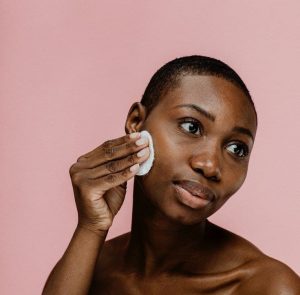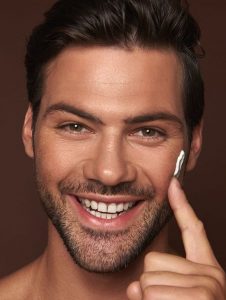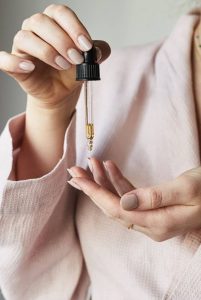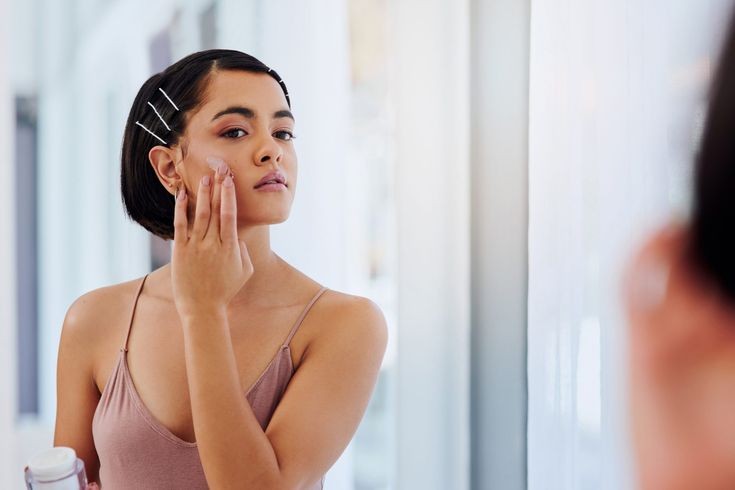Skin is the body’s largest organ, and it requires proper care to look and feel its best. To keep your skin healthy, it’s important to develop a morning and nighttime skincare routine that works for you.
Whether you want a simple 3-step routine for the morning or have time for a full 10-step regimen at night, the order in which you apply your products matters. Because there isn’t much point in having a skincare routine if your products don’t get a chance to penetrate your skin.
Morning skincare routine
The morning is an important time for your skincare routine. What you do when you first wake up can have a big impact on your skin for the rest of the day. It’s better to keep your morning routine minimal. As a quick rule of thumb, skincare products should be applied lightest to heaviest.
Here are some tips for a good morning skincare routine:
Step 1: Cleanser

Starting your day off right means starting with a clean face! Depending on your skin type and current concerns, you’ll want to seek out a cleanser that best suits you.
A mild facial cleanser is a key to keeping your skin healthy and free from dirt, oil, and makeup. Many people make the mistake of using soap on their face, which can be harsh and dry. Soap can strip your skin of its natural oils, leaving it dry and irritated.
A low-pH cleanser in your morning skincare routine helps to properly deep clean without causing redness that is hard to calm before makeup application.
Work your cleanser into a foam with a little bit of water and allow it to sit as a mask on your skin for a couple of minutes if you have time, and rinse with cold water. Press a clean washcloth onto your skin to dry–do not rub so you don’t cause extra redness or irritation.
Whether you’re looking for a formula to kick-start acne-fighting from step one, or you need something gentle to avoid dryness, a great cleanser can really start your routine off right. Plus, it can boost the other parts of your routine by adding hydration.
Step 2: Toner

Toner is easily the most misunderstood skincare product and way more important than it receives credit for. It is the first barrier product you apply–good toner balances your skin’s pH and is intended to hydrate.
While it’s often used as a way to refresh the skin without actually washing it, it can also work as a post-cleansing step to help balance the skin. These light, water-based liquids are best applied with just a light misting or a swipe using a cotton pad.
Step 3: Antioxidant serum
The most important (and expensive) step in your morning skincare routine, aside from sun protection, is an antioxidant-rich serum. It tends to be the “brightening” products or “correctors.”
Your face is up against a lot of agents that wish to do it harm throughout the day: exhaust fumes from the city bus, your dirty phone screen, your cortisol levels during a 3 p.m. conference call, etc. Serums see to it that none of those stressors live eternally as fine lines between your eyebrows and keep your skin bright and firm longer.
If you use any spot treatments—such as those for acne—that’s part of this step, as well. You’ll want to work your way from thinner products to those with a thicker consistency. This means thinner serums go on before your moisturizer, not after if you want them both to work.
The other trick with this step is to avoid combining ingredients that simply don’t work together. Layering certain active ingredients is a recipe for skin irritation or, in some cases, ingredients counteracting and effectively neutralizing each other. Always research any serums you’re layering to ensure that the active ingredients are safe to combine.
Step 4: Eye cream

Plumping and hydrating your eyes in the morning will make you look more awake and help makeup apply better if you’re wearing it. Opt for a thinner formula in the morning versus something thick and emollient; it’ll absorb faster and make makeup last longer throughout the day. By applying your eye cream at the very beginning, you avoid running any risk of traces of other products getting into your eyes from residue on your hands.
Eye creams can address any number of issues, from fine lines and wrinkles to dark circles, puffiness, and more. Look for ingredients that address those issues without irritating.
Step 5: Moisturizer

Daytime moisturizing is an important step in any skincare routine, but it’s often overlooked. Many people think that moisturizer is only necessary at night, but that’s not the case. Applying moisturizer during the day can have several benefits:
- It can help protect your skin from the sun’s harmful UV rays.
- It can keep your skin hydrated and looking healthy.
- It can help to reduce the appearance of fine lines and wrinkles.
- It can also help to make makeup look better and last longer.
Keeping a light moisturizer for daytime is always better. There is no such thing as skin that is too hydrated, and your sunscreen should not be the stand-in for moisturizer. These two products serve vastly different purposes and are not interchangeable, no matter how moisturizing your sunscreen claims to be.
Step Six: Face oils

Face oils can be a real game-changer when applied properly, although they might not be part of every skincare routine.
The key is to find a formula that specifically addresses your concerns, whether that’s balancing, hydrating, brightening, or so on. If you do add oil to your routine, you should always apply it last, right before sunscreen. This is because it essentially acts as a seal on your face.
Step 7: Sunscreen

If you only had time for one skincare product each morning, it had better be sunscreen. You should always apply sunscreen.
It’s no secret that sunscreen is a must-have for summer. But wearing sunscreen every day is important all year round, especially if you’re going to be spending time outdoors. Sunscreen protects your skin from the sun’s harmful UV rays, which can cause skin cancer and other serious health problems.
Make sure to wear sunscreen with an SPF of 30 or higher and reapply every two hours. Sunscreen is especially important if you have a fair complexion or light hair.
Even if you’re not going to be outdoors all day, you’ll want some SPF protection for just every day, environmental sunshine. Look for a lightweight formula with a solid SPF rating. And if you’re really trying to be as “clean” as possible in your skincare, look for a green sunscreen made with botanical ingredients and fewer harmful chemicals.
Optional: Primer
Primer is equal parts skincare and makeup, but an optional step if you aren’t planning on applying any pigmented products after your sun protection. Primer not only allows for a more flawless application of foundation, but it is the last barrier of protection for your skin.
In brief, after you select the right products for each step in your skincare routine (more on that in a moment), you have to figure out the order in which to apply them.
By applying skincare products most effectively, you’re making sure they’re working properly and that you’re not wasting your money on expensive skincare.


